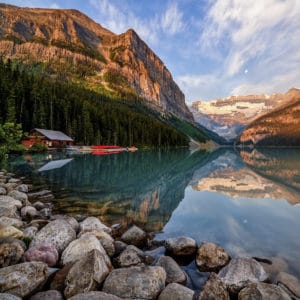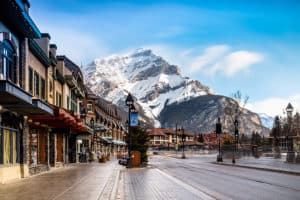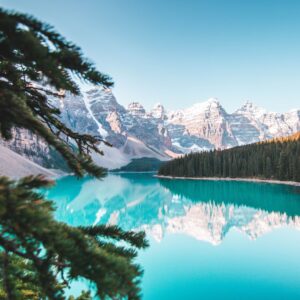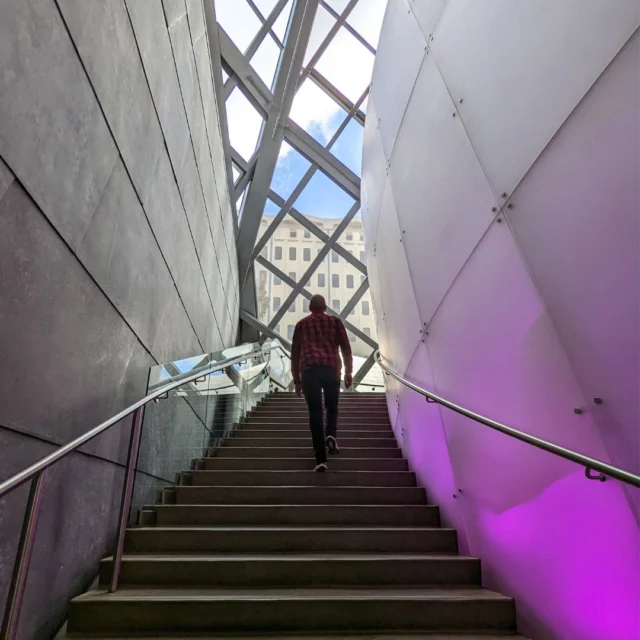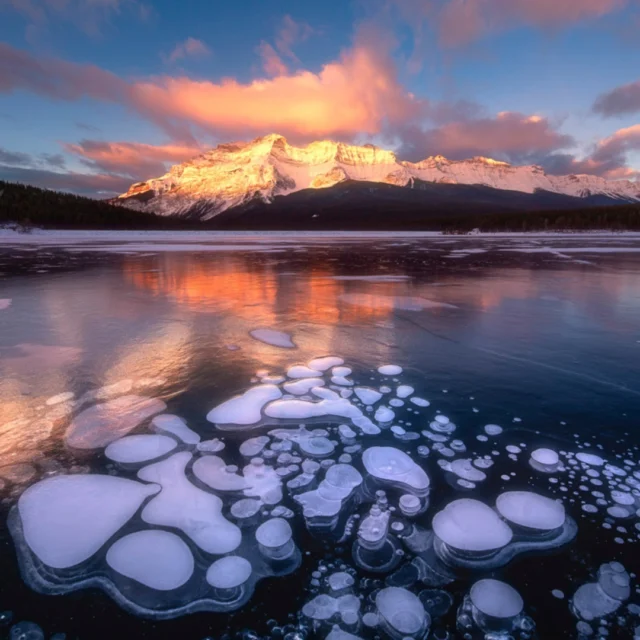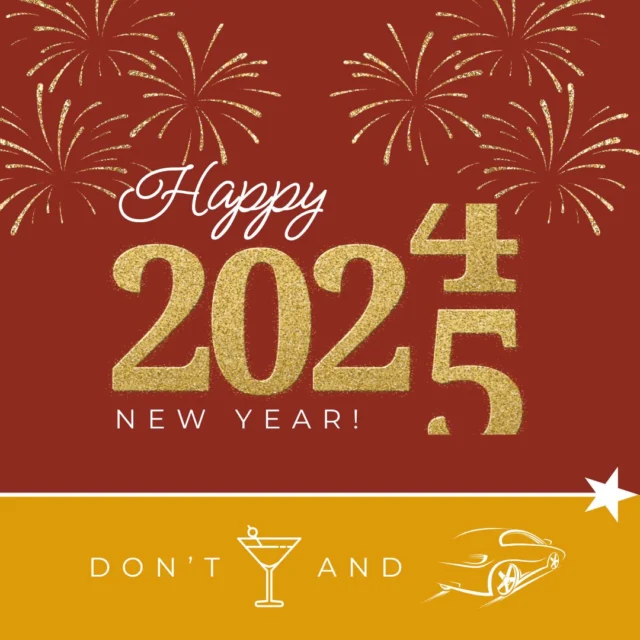Disclaimer: This page may contain affiliate links. Please review our full Terms and Conditions for more information and our Privacy Policy. Note that any pricing, operating hours, or other such information provided below may have changed since initial publication.
Words and Photography: Jeff Bartlett
Last updated on January 13, 2025
It’s always challenging to put the beauty of Banff National Park into perspective. Rather than get lost in the superlatives I often use to describe this place, consider this: Lake Louise is easily the most recognizable Canadian landscape, and its image is often used to advertise Canada around the world. It’s an incredible location. But the photography compositions are so abundant I almost left it off my list of the seven best photo spots in Banff National Park.
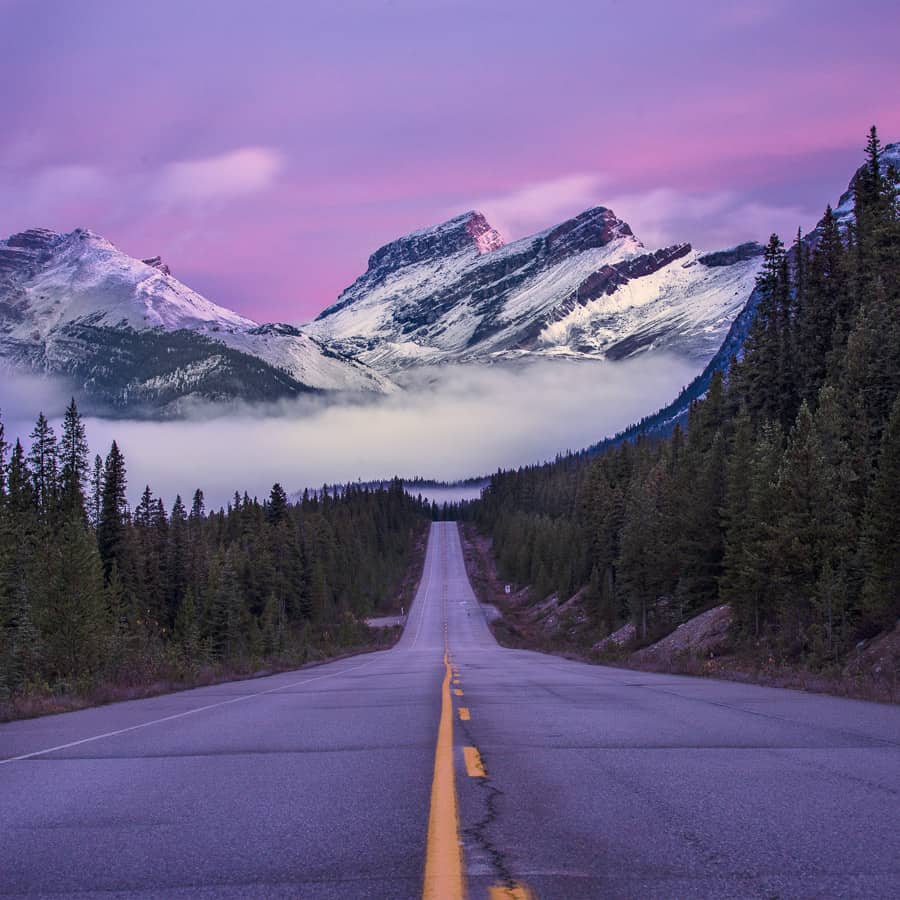
Located just west of Calgary, Alberta, Banff is an extremely busy tourist destination in the heart of the Canadian Rockies. Nearly five million people visit each year. While sightseeing remains the most popular activity – locals like to claim that 90% of visitors never stray more than a few kilometres from their car – it’s an incredible destination for hiking, climbing, skiing, and ice climbing.
From my perspective, it’s a photography paradise, and I cannot imagine a better location to build a portfolio or to compile a photo album from a family vacation. I’ve already spent five years taking photos in Banff, but I don’t think I’ll ever run out of new locations to capture.
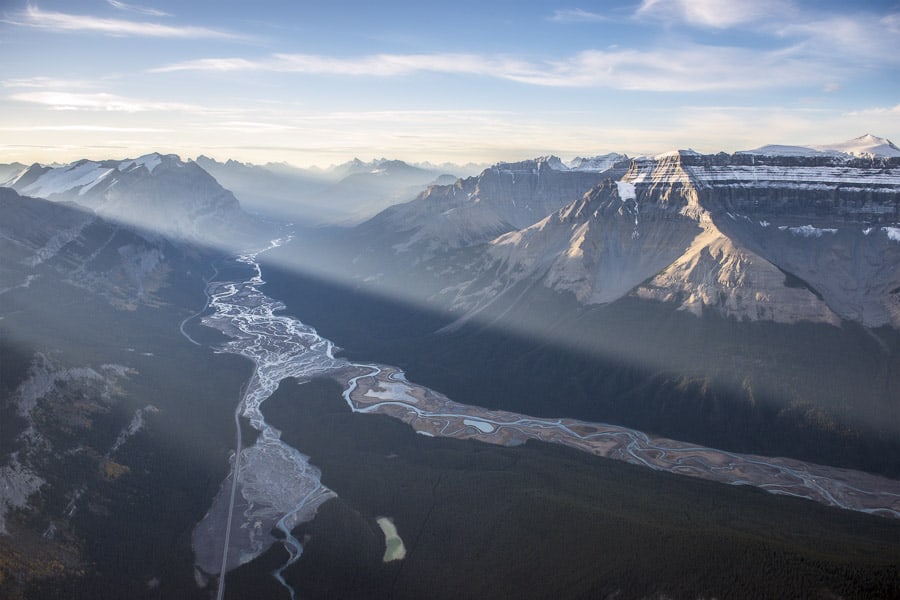
Tips for Photography in Banff National Park
Whether you’re visiting Banff for the first time or returning to chase the perfect photo, there are a few important things to remember before pulling your camera out. This national park is one of the few ecosystems with more Grizzly bears than Black bears, so always carry bear spray. If you’re fortunate to see a bear or any other Alberta wildlife, view it from a safe distance, never approach wildlife, and don’t block traffic if you’re stopping. The weather can be a bit temperamental, too, so it’s best practice to carry both a warm layer and a wind/rain jacket even on the hottest summer day.

As for camera gear, just bring what you’re comfortable using. Most hobbyists will want a dSLR or mirrorless camera with both a wide-angle and a telephoto lens. A smartphone will work, too, if that’s what you prefer.
The Most Popular Photo Spots in Banff
Capturing all seven of these Banff photography locations in a single day, beginning from the Banff townsite, will take an entire day. It’s a total of 325 km of driving. If you are in Banff for longer and photography is your priority, spread these locations out over a few days so you can capture better light during golden hour at a few different spots.
Mount Rundle from Vermillion Lakes
The photograph of the knife-like ridge of Mt Rundle reflected in Vermillion Lakes isn’t nearly as remote as it appears. It’s the ideal place to begin a photography road trip in Banff because this spot is just a 5-minute drive from downtown Banff and just a few steps off the road. Its proximity to town makes it a popular destination for both last-minute light chasers and daily photography tours (see some of our choices for Banff tours – for photography and beyond); however, don’t let the crowds dissuade you. Few places are as stunning and simple to photograph.
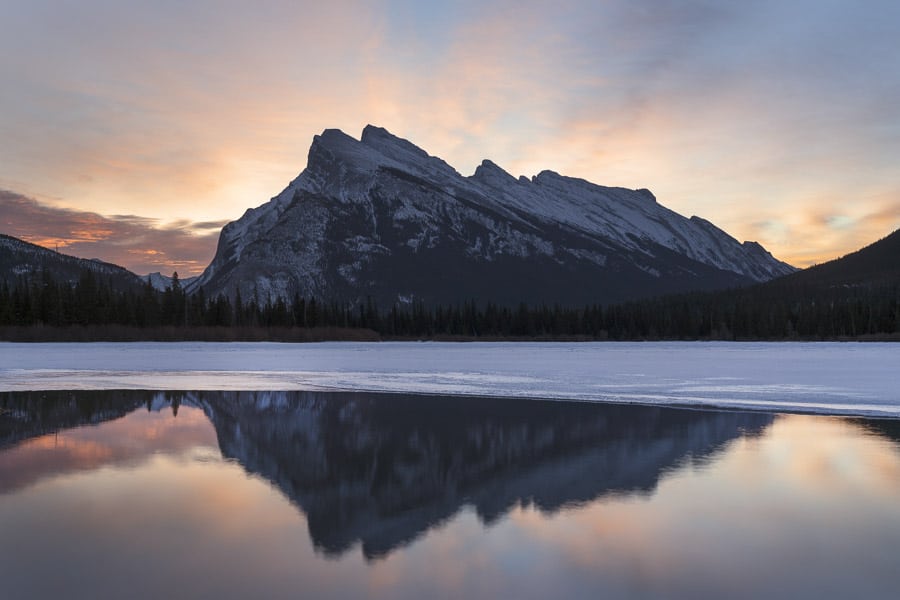
There are three lakes along the Vermillion Lakes Road and the best photo spot is found at the second lake, just before the road curves away from the water.
Key points:
- This might be the most consistent year-round spot for an epic Banff sunrise, and a bonus is that this spot also has good afternoon light throughout the summer.
- It’s a mid-range shot, so I’d opt for my 24-70mm lens, but most kit lenses and cell phones will have the right focal length.
Tunnel Mountain’s Surprise Corner
The Fairmont Banff Springs Hotel, which opened in 1888 as one of the Canadian Pacific Railway’s Grand Railway Hotels, is a Banff icon and a National Historic Site of Canada. While there are a few classic shots of this stunning property, this Banff viewpoint is best photographed from Surprise Corner. Day or night, it’s one of the most popular photo spots in Banff. It’s easy to find by the parking lot located at the switchback where Buffalo Street changes names to become Tunnel Mountain Drive.
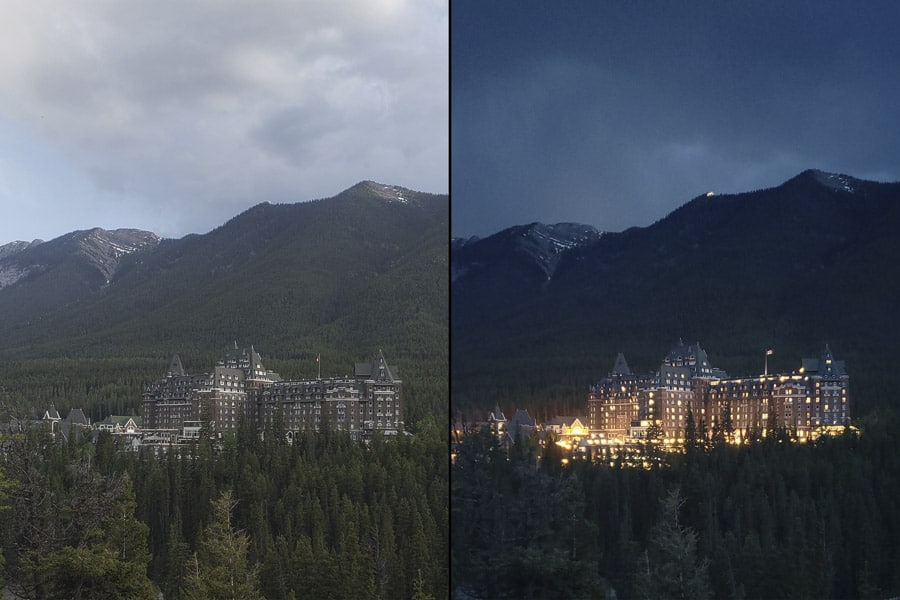
Key points:
- It’s best photographed either during blue hour or on a stormy day when the exterior and interior lights add mood to the overall image.
- This is a straightforward shot and it’s so close to town, I might leave my camera kit behind and capture it with my smartphone during a short evening walk. If I had my camera, I’d use either a 24- or 35-mm lens.
Lake Minnewanka Loop
The Lake Minnewanka road is a 12-km loop drive that goes past both Lake Minnewanka and Two Jack Lake (two of the most beautiful lakes in Alberta), which on their own are stunning photo spots in Banff National Park. But I prefer this loop drive to photograph wildlife; Elk and Bighorn sheep are the most common sightings. I’ve also had the chance to photograph wolves, coyotes, deer, and bears along this short drive.
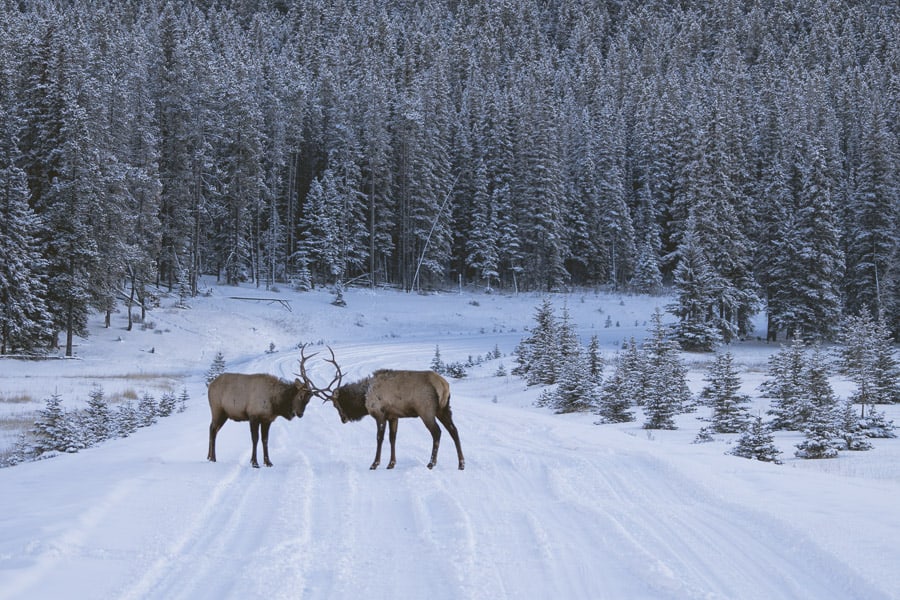
Key points:
- Elk, deer, and Bighorn sheep can be seen year-round, while grizzly and black bears are more common from May through October.
- As with any wildlife viewing, it’s completely by chance; however, the first and last hour of daylight typically brings the best opportunities.
- Never leave your vehicle or approach wildlife. Park on the shoulder, don’t block traffic and limit your stops.
- I typically use my 70-200mm to capture wildlife but wish I owned a 100-400mm.
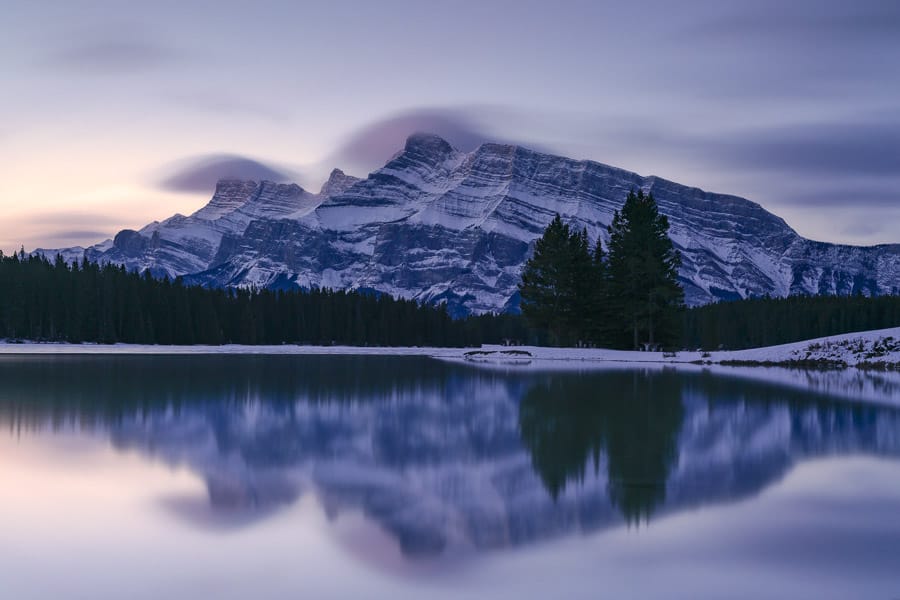
Castle Mountain Junction
Castle Mountain dominates the view during the drive between Banff and Lake Louise. This prominent mountain cannot be missed, whether you’re driving the TransCanada Highway or Bow Valley Parkway. There is a trick to finding the classic place to photograph it. A short section of the Banff-Windermere Highway (93S) connects the TransCanada highway to Castle Junction. Park at the bridge that crosses the Bow River and walk down a short access trail and through the wildlife gate. While the view is great from anywhere, a series of small reflection ponds are found just upriver.
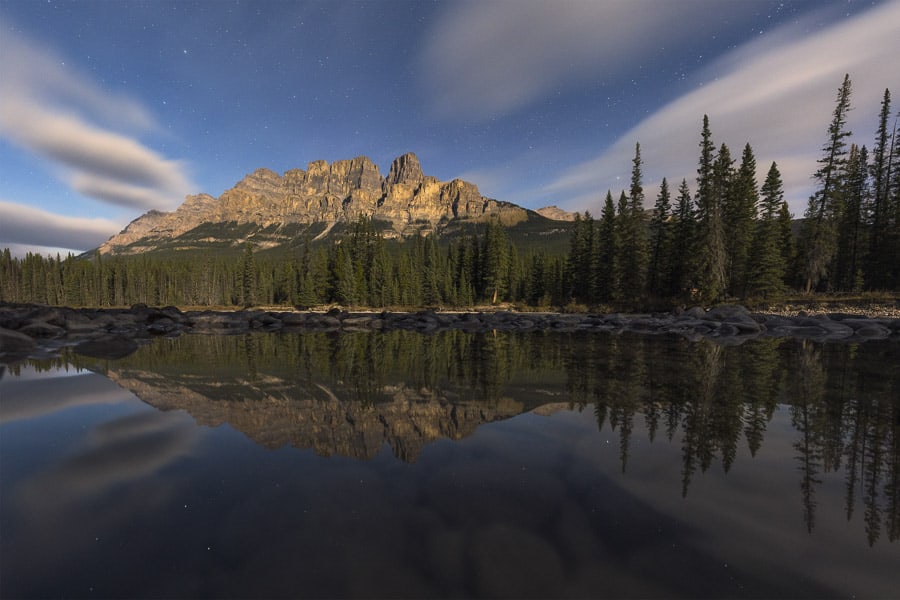
Key points:
- This location is at its best around sunset when the dramatic cliffs will be illuminated in warm light.
- The reflection pools might seem small; however, using a wide-angle lens and keeping the camera extremely low to the ground will capture the entire scene. I’d most likely use the widest lens I have (for example, my 16-35 mm).
Moraine Lake
Moraine Lake hands-down takes the title for best photo spots in Banff National Park and probably in the world. It takes less than 10 minutes from the parking lot to hike the “Rockpile Trail” where the view reveals itself. The emerald-green waters stretch the length of the Valley of the 10 Peaks, which tend to catch alpenglow about 45 minutes before sunrise. While you’ll never have this location to yourself unless you make the long trek in throughout the winter when the road is closed, it’s always worth dealing with the crowds.
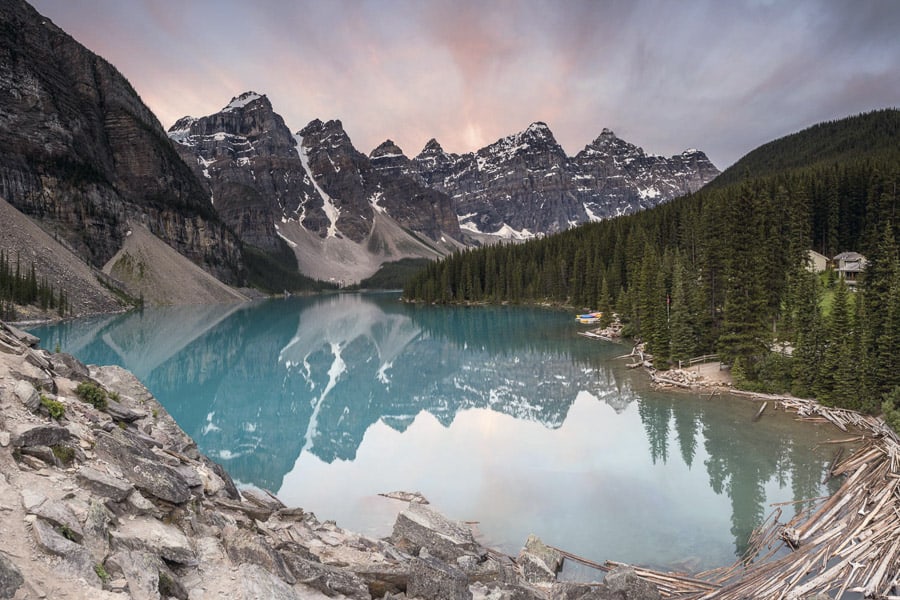
Key Points:
- This location is at its absolute best at sunrise and is one of the most popular photo spots in Banff National Park for sunrise.
- New from 2023: Personal vehicles are no longer allowed, and it is necessary to take a shuttle to Moraine Lake. We recommend booking a shuttle with the Moraine Lake Bus Company – not only are they the only company to offer sunrise shuttles (gotta get those epic shots for the ‘Gram!) but they are also the only company that lets you pre-book your return journey (so that you don’t have to wait).
- Wide-angle lenses excel here, so I’d opt for a 16-35mm to provide some flexibility for different compositions.
Lake Louise
I realize I just said Moraine Lake might be the best roadside location in the world; however, its biggest competitor in that debate might be Lake Louise, which is located just 15 minutes away. Lake Louise is likely the better-known of the two locations for a few reasons. It’s open year-round, the Fairmont Chateau Lake Louise is a second CP-era Great Railway Hotel, and it’s the namesake of this area.
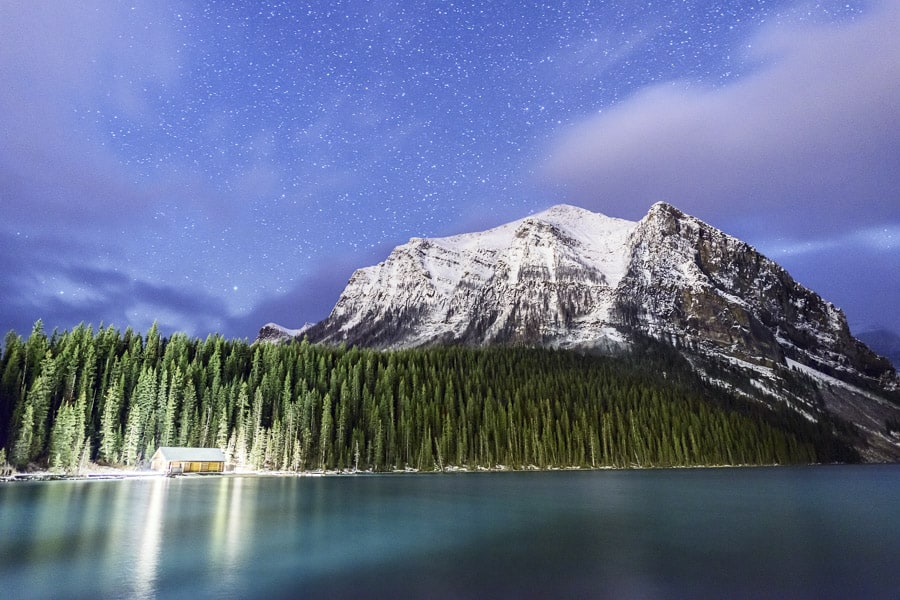
There are two classic scenes. Looking straight down the lake, it’s a layered image with ridiculously turquoise blue water, the stunning Victoria Glacier, and rugged peaks of both Mt Lefroy and Mt Victoria. Just two the left, the iconic Lake Louise Boathouse is nestled in the forest beneath Mt Fairview.
For many people, the view from the lakeside is enough, but adventurous hikers could take the opportunity to either climb the relatively easy Big Beehive trail or the more difficult Devil’s Thumb, to see the lake from above.
Key points:
- Much like nearby Moraine Lake, Lake Louise is best captured at sunrise; however, it’s worth visiting at any hour.
- I most often find myself sticking with a traditional lens, like the 24-70mm, at Lake Louise, to compress the scene and draw the glaciated peaks closer.
Bow Summit and Peyto Lake
The Icefields Parkway stretches 230 km between Lake Louise and Jasper and photography opportunities lie around every bend. One of the best views is from Bow Summit, which marks the high point of the drive and the second-highest paved road in Canada. From the parking area, a short hike leads to the Peyto Lake viewpoint. It’s up to you to decide if the lake looks more like a howling wolf or a fox.

Key points:
- This location has fantastic afternoon light that often creates light rays pouring into the scene just before the sun dips below the mountain peaks.
- It faces north, so it’s a great place to capture the night sky or northern lights.
- I most often use my wide angle 16-35mm lens and frame the scene.
Bio
Jeff Bartlett is an adventure photographer and filmmaker based in the Canadian Rockies. He often leads 1-on-1 and small group photography workshops throughout Banff National Park, between assignments for Travel Alberta, National Geographic, Eddie Bauer, and Salsa Cycles. To see more of his work, follow Jeff on Instagram @photojbartlett or explore his current workshop opportunities.
